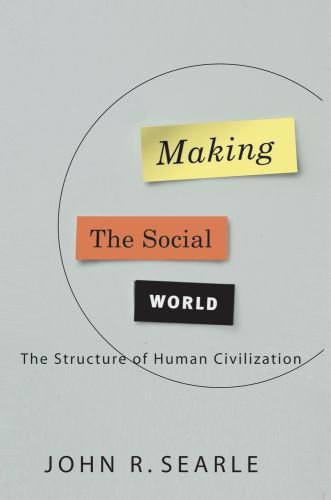Making the Social World
豆瓣
The Structure of Human Civilization
John Searle
简介
There are few more important philosophers at work today than John Searle, a creative and contentious thinker who has shaped the way we think about mind and language. Now he offers a profound understanding of how we create a social reality--a reality of money, property, governments, marriages, stock markets and cocktail parties. The paradox he addresses in Making the Social World is that these facts only exist because we think they exist and yet they have an objective existence. Continuing a line of investigation begun in his earlier book The Construction of Social Reality, Searle identifies the precise role of language in the creation of all "institutional facts." His aim is to show how mind, language and civilization are natural products of the basic facts of the physical world described by physics, chemistry and biology. Searle explains how a single linguistic operation, repeated over and over, is used to create and maintain the elaborate structures of human social institutions. These institutions serve to create and distribute power relations that are pervasive and often invisible. These power relations motivate human actions in a way that provides the glue that holds human civilization together. Searle then applies the account to show how it relates to human rationality, the freedom of the will, the nature of political power and the existence of universal human rights. In the course of his explication, he asks whether robots can have institutions, why the threat of force so often lies behind institutions, and he denies that there can be such a thing as a "state of nature" for language-using human beings.
contents
目录
前言/ix
致谢/xi
1 本书的目的/3
附录:本书的一般理论与社会现实之建构的特殊理论之间的比较/19
2 意向性/25
3 集体意向性以及功能的分配/42
4 作为生物与社会范畴的语言/61
5 制度与制度事实的一般理论:语言和社会现实/90
6 自由意志,理性,和制度事实/123
7 权力:义务,背景,政治,和他者/145
8 人权/174
附录/199
结论性的评论:社会科学的形而上学奠基/200
主题索引203
姓名索引207
